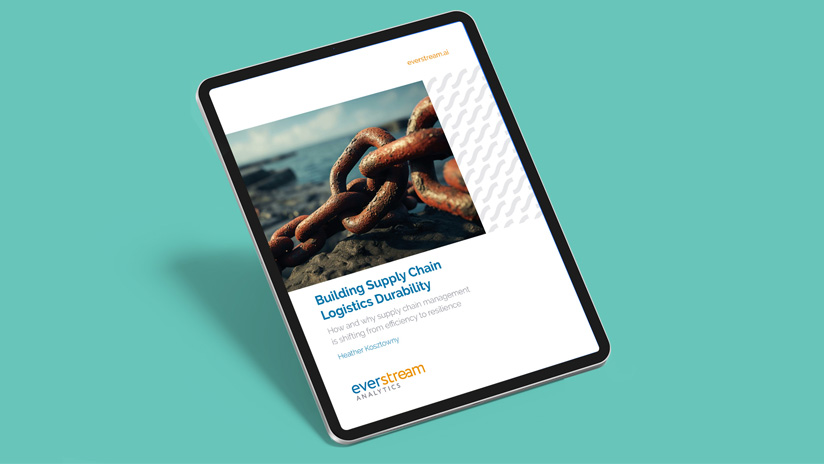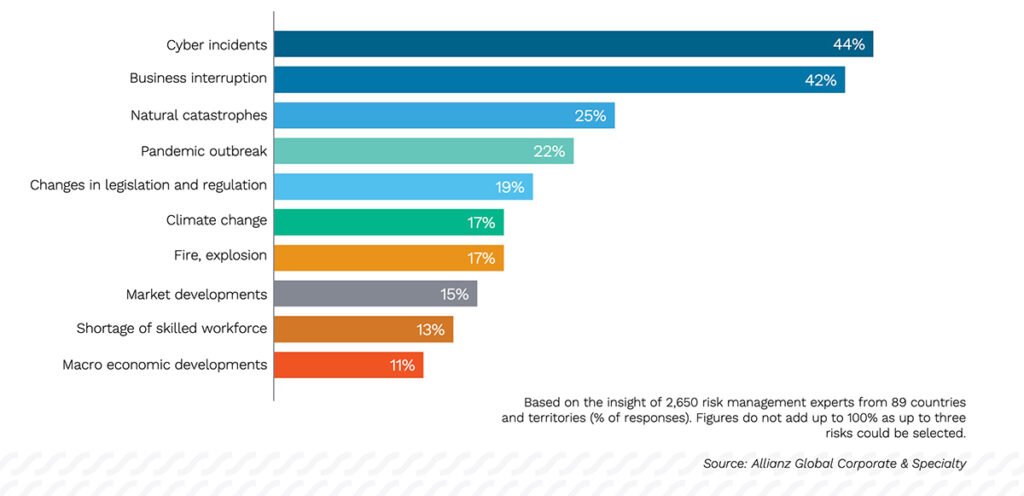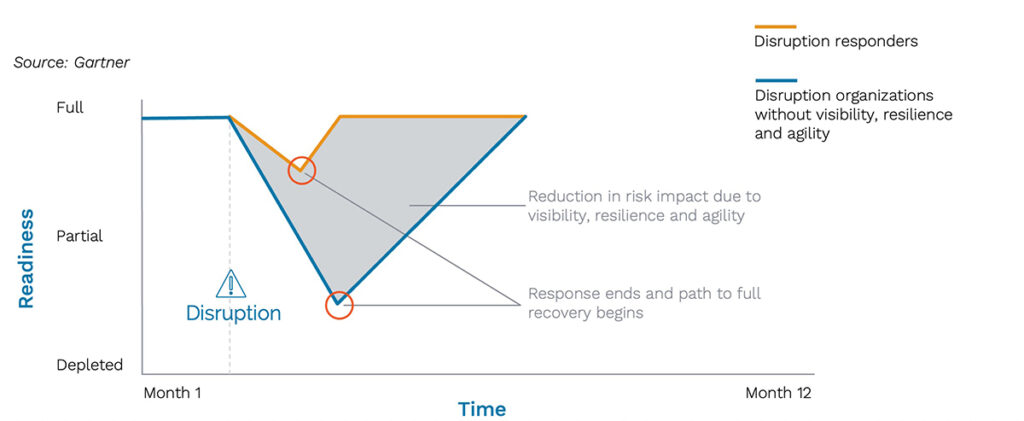This kind of predictive data can help companies save money as well. Reefer trucks, for instance, are expensive. If you know you have an upcoming route where temperatures will remain below a certain threshold, you may be able to decide to forego the reefer truck for a standard truck to avoid the costs while ensuring the integrity and quality of the product.
Carriers can better schedule the pickup date, determine how much risk they are willing to take with each shipment, decide what kinds of equipment they may need to secure and protect the cargo, determine which mode of transportation is best, and identify optimal lanes that can speed shipments and reduce costs. This decision-making phase must include accurate, real-time, and predictive data that is presented in a clear way.
No matter what the risk, your transportation risk management solution should be able to help you plan for the next best course of action. Even if the threat can’t be avoided, you’ll have the data early enough to set the right expectations with your customers.
This agile planning is what transportation risk management is all about and is critical for carriers to implement to stay competitive, profitable and provide value to its customers.
How to choose a transportation risk management solution
The key to finding a transportation risk management solution is to understand the value of visibility. Both shippers and carriers need real-time insight into the shipments: what’s in each truck and how specific cargo should be transported, the shipping lanes, expected and actual pickup and delivery times, and all the variables that could impact these various elements.
Variables are many and some are unpredictable. Weather, natural disasters, crime, protests or riots, infrastructure issues, driver health and safety, wildfires and other issues can directly or indirectly affect delivery reliability. By predicting these variables ahead of time, carriers are better able to set appropriate expectations, reduce costs and ensure shipments are properly cared for and delivered as expected.
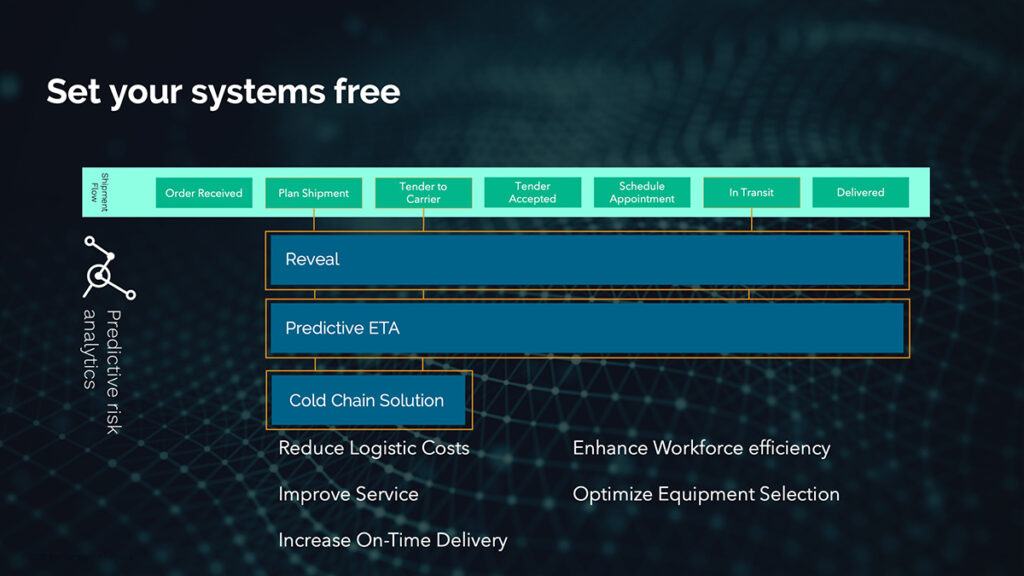
Figure 3: Everstream’s advanced transportation risk management software supports transportation management systems (TMS) in multiple ways.
This type of granular visibility requires technology, of course, but not just basic or legacy technology. Today, more companies are relying on artificial intelligence, cognitive technology, and machine learning to data mine bits of information that are spread across multiple systems. You need real-time and predictive data at your fingertips to be able to make decisions ahead of time, setting appropriate expectations with your customers, reducing costs, and ensuring shipments are safely transported as expected. Companies that invest in these technology solutions are poised to gain and retain the competitive advantage.
The most critical aspect of a transportation risk management solution is its ability to provide wall-to-wall visibility up and down the supply chain. Whether you are a shipper or a carrier, real-time insight into shipments is the only way to control risks. This includes every truck and its cargo, cargo requirements, available shipping lanes, pickup and delivery commitments and schedules, and of course, all the risks that could impact those variables.
Before you can choose the right transportation risk management solution for your organization, you must first ask what risks you know about now that could affect your company’s strategic goals and objectives. This is an investment, requiring decisions to be made on how to prioritize a transportation risk management solution. Remember, there is a dollar amount tied to your ability to deliver shipments on time and on budget.
When those factors are understood, a risk management solution can be designed.
In the past, transportation companies relied on manual data gathering and incomplete, outdated spreadsheets to assess risks. More mature companies may have used software, but it was limited in what it could do, particularly given the dynamic nature and breadth of the data.
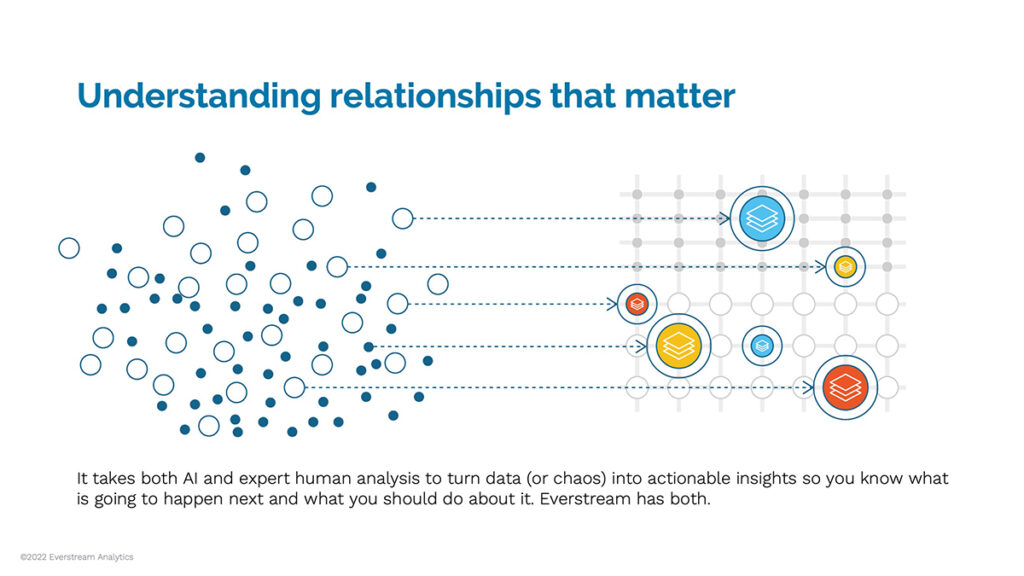
Figure 4: It takes both AI and expert human analysis to turn data into transportation risk management insights that reveal what will happen next, and what managers should do about it.
Today, there are better, more reliable, and efficient solutions on the market, yet not all are created equally. The key is to find a comprehensive solution that can go beyond basic risk detection to offer actionable, predictive intelligence that informs decisions and sets a mitigation strategy in motion. When considering a modern transportation risk analysis solution, make sure it offers the following features:
1. Comprehensive risk assessment
The greatest benefit you’ll get from your investment into a modern transportation risk management solution is that it will offer complete visibility into all of your risks. One of the biggest issues with previous analysis methods is too many risks are missed, creating blind spots that leave organizations vulnerable. It is imperative to be able to look back at historical data to learn from the past, view present data to see in real-time what is happening, and have insight into forward-looking data that forecasts potential risks. This 360-degree view is the only way your company can see the full picture to make more informed decisions faster.
2. Instant and actionable reporting
Unfortunately, many software solutions fail to present the data in a way that instantly makes sense and is actionable. Stakeholders waste too much time breaking down the data to determine what really matters. Look for a transportation risk analysis solution that paints the picture, so all your team needs to do is strategize and execute. This means the data should be visual, identifying risks but also giving those risks probability and severity scores, for instance. In cases where the solution deems a risk as being high, make sure the system will send instant alerts to stakeholders for rapid mitigation. Look for software with root-cause analysis to reveal where the issues originate to foster continual improvement and more proactive future mitigation.
3. Easy and continual customization
One size rarely fits all, including in a transportation risk analysis solution. An off-the-shelf solution without customization features will end up frustrating more than helping, likely providing features you don’t need and lacking ones you do. Find a solution that considers your organization’s unique requirements, demands, vulnerabilities, and value streams. It should be able to analyze and present the data you and other stakeholders most want and need to see, how you each want to see it. In this way, each person can glean the information they need to make their own decisions, while also providing a standardized, trusted data set to drive conversations that impact the business.
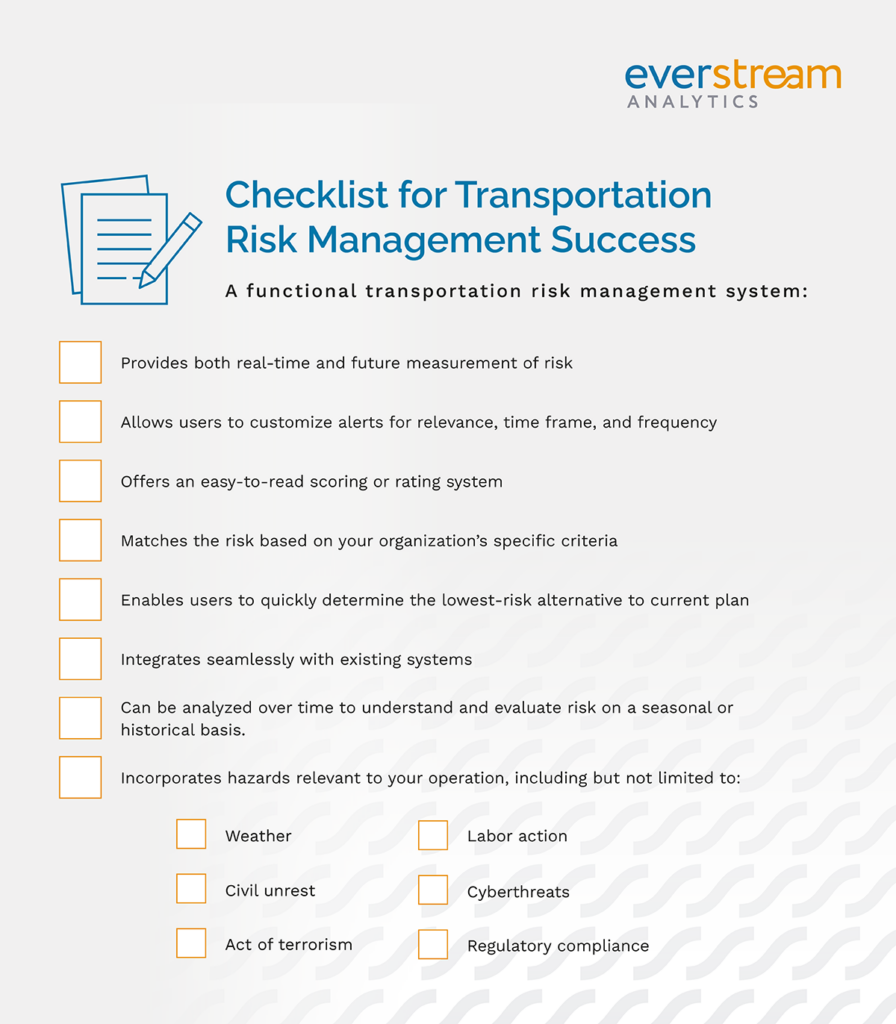
Figure 5: Checklist for evaluating transportation risk management solutions software platforms.
4. Integration
Because data comes from so many sources, it is important that a transportation risk analysis solution easily integrates with other business systems. When data is siloed and disconnected, it is basically useless to the organization. It also consumes massive amounts of time when resources are having to manually locate and input data, delaying mitigation efforts and increasing the risk for errors. By the time data is collected, much of it is outdated and unreliable. On the other hand, when systems are sharing data automatically, there is less risk for error and the data is reliable and current. Stakeholders trust the data and can confidently base their decisions on the data. Everyone is seeing the complete picture and it’s consistent across the business.
5. Objective mitigation recommendations
Identifying transportation risks is important, but it’s how those risks are managed that counts. It’s not always easy to know what the best mitigation strategy is for every scenario, making it advantageous to have an analysis solution that also crunches the data to determine the best potential alternative actions would be. Having these recommendations saves precious time, enabling transportation companies to make faster, more proactive decisions earlier in the timeline to minimize disruptions to deliveries and the supply chain. The software will provide insight into “what if” scenarios, showing decision-makers how a change in a lane, a mode of transportation, the shipping date, and the type of vehicle used, for example, would impact the ability to meet on-time delivery commitments and the bottom line.
6. Scalable to evolving business needs
A transportation risk analysis solution should be able to not only meet the current needs of your business, but it should also be able to grow as your company evolves to meet whatever demand is placed on it and whatever risks threaten the supply chain. It should also scale to meet the individual business needs of each stakeholder, consuming and analyzing the specific data each stakeholder requires and then presenting the information in the “language” that speaks to each stakeholder. For instance, executives will require different data, higher-level data than a business unit leader who is more concerned with micro-level details that affect workflows. The solution needs to be able to handle both requirements, delivering the “just right” level of data.
Your transportation risk management solution needs a 360-degree view
Transportation companies can take advantage of the many benefits of technology to empower them to meet change and customer demands head-on. Risk mitigation leads to lower costs, less supply chain disruption, and a greater ability to deliver value. As PwC says, “Logistics companies will need to focus on ‘digital fitness’, cost efficiency, asset productivity, and innovation if they want to meet shopper expectations.”
This type of digital fitness requires historical, real-time, and predictive data. Transportation risk analysis is only effective when all data points are integrated. Executives and business leaders need more than data; they need insights that reveal patterns and identify opportunities to mitigate risks with recommendations on the best ways to do so. Data may be power but only when it’s operationalized and presented in a way that makes sense to each stakeholder. The sooner leaders have this information, the faster they can respond.
Investment in a transportation risk analysis solution is an investment into the profitability and success of your company.
How are safety considerations part of transportation risk management?
Beyond weather and other variables that can impact a carrier’s performance, there are always safety concerns. If a driver, for instance, is not practicing safe driving habits, not only is the shipment at risk, but the company is at risk for causing accidents, injuries and even death. They are liable for every truck that leaves each dock. Ensuring drivers are adhering to safety guidelines and the fleet of trucks are in good condition is up to the carrier. These considerations are critical in reducing risks.
The Federal Motor Carrier Safety Administration has a program intended to improve the overall safety of commercial vehicles and reduce the associated accidents and fatalities. The CSA (Compliance, Safety, Accountability) are its pillars, holding carriers and their drivers accountable for adhering to regulations that directly impact safety.
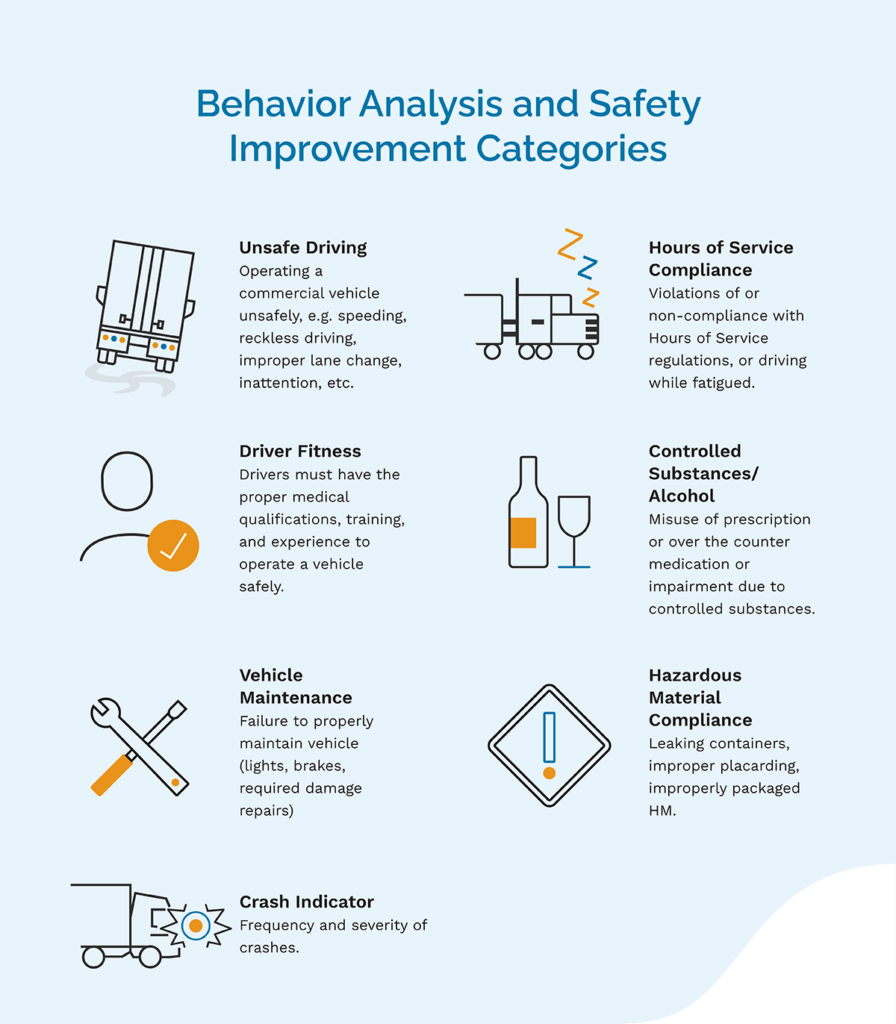
Figure 6: The seven transportation safety categories monitored by the U.S. Department of Transportation
CSA scores are given to carriers. They are meant to provide a measurement of compliance and safety. These scores include details from roadside inspections, crash reports and investigations, vehicle registration, public complaints, and carrier citations. The number of violations, as well as their severity and dates, are weighed. Often, shippers will ask for these scores when evaluating carriers.
The benefits of transportation risk management
The purpose of transportation risk management isn’t to eliminate risks. Risks are inherent in every industry, and many are completely out of the control of any organization. Instead, transportation risk management serves as a system to anticipate potential disruptions for one purpose: to help transportation companies develop dynamic processes and systems that quickly, effectively, and reliably respond to changing logistics and transportation issues.
These predictions are only the beginning. They shed light on what may happen, when and where, but the goal is to have the right mechanisms in place to properly respond to those predictions before they negatively impact the business. To have a plan of action in any circumstance (known, predicted or unknown), transportation companies must constantly reevaluate their risks. It’s not a one time and done sort of thing, either. Those risks travel with each truck across thousands of miles of roads and across borders. They fluctuate and can change every mile of the journey.
Data is at the center of risk prediction. Companies must have access to accurate, reliable, and comprehensive information that offers a clear picture of supply chain and transportation network vulnerabilities. By predicting interruptions, companies can be proactive in minimizing their impact. They can create backup plans or alter plans entirely to lessen the blow. In essence, they can be more resilient to changes and threats.
